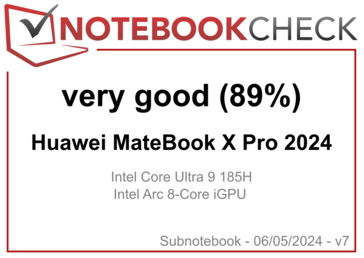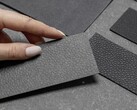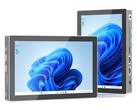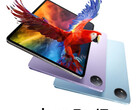Our reviews focus on evaluating devices as objectively as possible. With an increasing variety of features and ever-increasing performance values, there are more and more aspects for us to consider.
In addition to laptops, our scoring system must of course also properly reflect smartphones, tablets, and mini PCs. Our major rating update to version 8 has been online since the beginning of June and is now being used for every test device.
In our technology section, you will find an overview page "Our Rating Criteria ", but we would like to give you a more comprehensive insight into the changes here. You can easily recognize the different versions by the v7 or v8 labels on our rating badges:
Rating system v8 at a glance
One of the fundamental changes to the new scoring system is the evaluation of performance. In addition to a generally improved utilization of the rating range, the rating for both processor and graphics performance has been significantly tightened in order to better take into account both current components and future developments.
In addition to the stability of performance development (throttling), which was already taken into account in the previous v7 system, the performance and possible performance reductions in battery mode are now also evaluated along with an optional rating for AI performance. We are also replacing the game The Witcher 3 with Cyberpunk 2077: Phantom Liberty in the tests for chassis temperatures, fan volume, and stability of gaming performance.
Further adjustments have been made to ports and equipment, where we have primarily focused on current standards such as high-resolution video outputs, Wi-Fi 7, and Bluetooth codecs or DRM support on mobile devices. We also evaluate whether the webcam has an aperture and whether there is a secondary M.2 slot.
Adaptive Sync has been added to the displays, and the rating for PWM flickering has also been expanded. The webcam rating has also been expanded to include additional points, such as a rating for the secondary camera and wide-angle or ultra-wide-angle lenses.
All these changes mean that the ratings for many devices will be lower and that the ratings of the old and new rating systems are not directly comparable. For this reason, there will also be two versions of our top lists in the current transition phase.
Sustainability assessment
In addition to the evaluation of the test device itself, our normal rating is now supplemented by a sustainability rating. Here, we look at various aspects such as the CO2 footprint, the sustainability of the materials and packaging used, power consumption, maintenance options (including available instructions and manuals), and the periods for software and feature updates.
The sustainability rating is not included in the overall rating and is listed separately. This is because we have to rely on the information provided by the manufacturers for some of these values, which unfortunately something that not all are able to do.






















